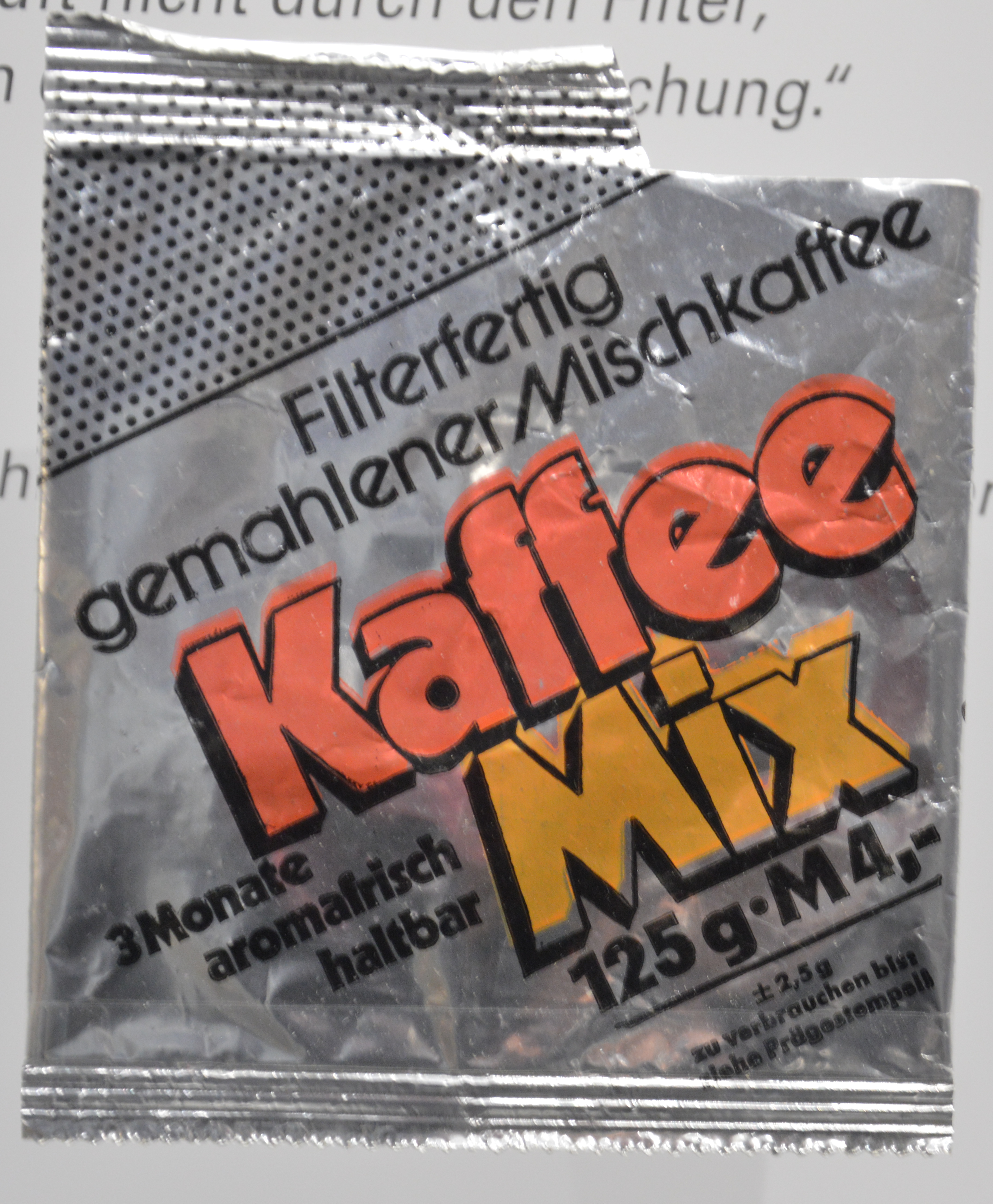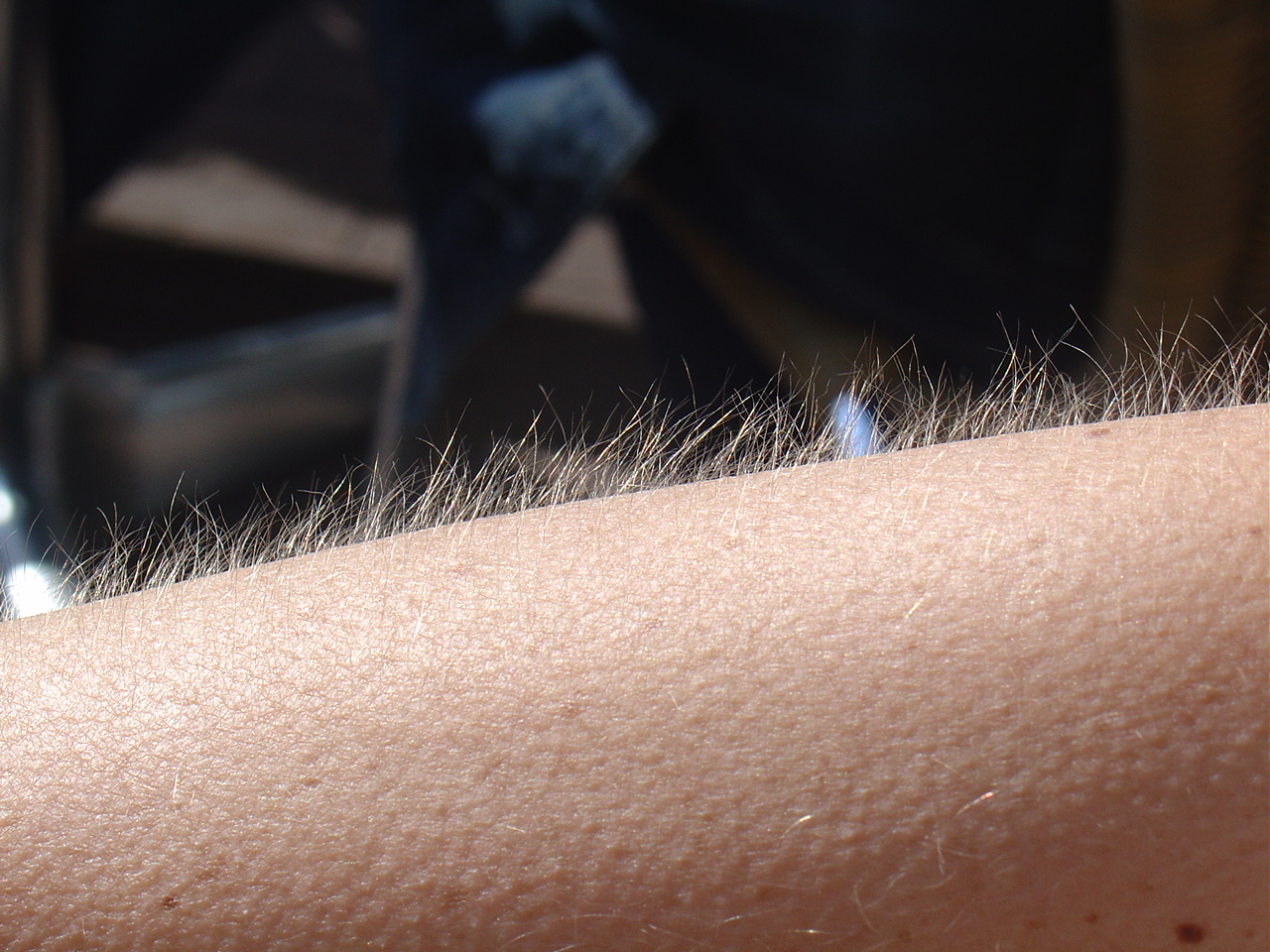|
Westpaket
(German for "Western package", plural: ) is the common term for care packages sent by West Germans to their friends and families in East Germany during the division of Germany from 1961 to 1989. History During the division of Germany from 1945 to 1990, and particularly after the construction of the Berlin Wall in 1961, East Germans were largely unable to visit West German friends and family members. At the urging of the Office for Pan-German Aid (), many West Germans regularly sent packages to East German relatives on special occasions, such as for birthdays or Christmas. In return, many East Germans would send an ''Ostpaket'', often containing food, spirits, handicrafts, or confections, such as Stollen for Christmas. With limited opportunities for phone calls and letters, were often the sole form of contact for families, and served as a pleasant improvement for daily life. Beginning in the 1960s, East Germany was able to reliably provide basic necessities, but luxury and exo ... [...More Info...] [...Related Items...] OR: [Wikipedia] [Google] [Baidu] |
Economy Of East Germany
The economy of the German Democratic Republic (East Germany; GDR, DDR) was a command economy following the model of the Soviet Union based on the principles of Marxism-Leninism. Sharing many characteristics with fellow COMECON member states — the East German economy stood in stark contrast to the market and mixed economies of Western Europe and West Germany. The state established production targets, set prices, and also allocated resources, codifying these decisions in comprehensive plans. The means of production were almost entirely state-owned. The GDR had an above-average standard of living compared to other Eastern Bloc countries or the Soviet Union, and enjoyed favorable duty and tariff terms with the West German market; in 1989, it was estimated that 50 to 60% of its trade was with Western countries. However by the mid-1980s its economy had reached a state of stagnation, contributing to the process of German reunification. History Soviet occupation period Each occup ... [...More Info...] [...Related Items...] OR: [Wikipedia] [Google] [Baidu] |
Stollen
Stollen ( or ) is a fruit bread of nuts, spices, and dried or candied fruit, coated with powdered sugar or icing sugar and often containing marzipan. It is a traditional German Christmas bread. During the Christmas season the cake-like loaves are called Weihnachtsstollen (after " Weihnachten", the German word for Christmas) or Christstollen (after Christ). A ring-shaped stollen made in a Bundt cake or Gugelhupf pan is called a ''Stollenkranz'' (stollen wreath). Ingredients Stollen is a cake-like fruit bread made with yeast, water and flour, and usually with zest added to the dough. Orangeat (candied orange peel) and candied citrus peel (Zitronat), raisins and almonds, and various spices such as cardamom and cinnamon are added. Other ingredients, such as milk, sugar, butter, salt, rum, eggs, vanilla, other dried fruits and nuts and marzipan, may also be added to the dough. Except for the fruit added, the dough is quite low in sugar. The finished bread is sprinkled with ic ... [...More Info...] [...Related Items...] OR: [Wikipedia] [Google] [Baidu] |
East German Coffee Crisis
The East German coffee crisis was a shortage of coffee in the late 1970s in East Germany caused by a poor harvest and unstable commodity prices, severely limiting the government's ability to buy coffee on the world markets. As a consequence, the East German government increased its engagement in Africa and Asia, exporting weapons and equipment to coffee-producing nations. Situation In 1977, East Germany experienced difficulties meeting domestic demand for coffee, a commodity that had to be bought using ', i.e. freely convertible Western currencies that were in short supply in Eastern Bloc countries. The coffee crisis indirectly led to changes in the world market for coffee. The coffee crisis led to a reorientation of East German foreign policy as well as considerable belt-tightening. In particular, the East German government engaged in barter with Third World countries, exporting weapons and trucks in exchange for coffee and energy. Background In the Soviet occupation zone, ... [...More Info...] [...Related Items...] OR: [Wikipedia] [Google] [Baidu] |
Care Package
The CARE Package was the original unit of aid distributed by the humanitarian organization CARE (Cooperative for Assistance and Relief Everywhere). Originally CARE was dubbed the Cooperative for American Remittances to Europe, and in 1946 CARE sent the world's first CARE Package. Although "CARE Package" is a registered trademark, the term has since been widely adopted as a generic term for a parcel of food or supplies sent for relief or comfort purposes. Origin In 1945, the newly formed CARE (then the Cooperative for American Remittances to Europe) initiated a program to send food relief to Europe, where large numbers of people were at risk of starvation in the wake of World War II. Arthur Ringland and Dr. Lincoln Clark approached 22 American charities to propose a non-profit corporation to funnel food parcels from Americans to loved ones in Europe. The charities agreed and on November 27, they incorporated CARE. CARE's leaders worked with the U.S. Army to acquire 2.8 million ... [...More Info...] [...Related Items...] OR: [Wikipedia] [Google] [Baidu] |
Military Miniaturism
Military miniaturism is a niche within the broader hobby of modeling focusing on military subjects. It is itself a rather broad subject, dealing with any scale model of military theme. It has an ever growing range of sub-hobbies, including scale figure modeling, armour modeling, model ship building, military aviation modeling, and historical wargaming. Modeling Building Given the nature of military models, hobby practitioners for the most part lean toward realism in their creations. The way in which these creations are produced are nearly as wide as the hobby itself, ranging from building a model kit "from the box" to kitbashing to complete scratch building of a model. A wide range of kits are available on the market,Family Consumer Science ndsu.edu with built results ranging from hyper-detailed repres ... [...More Info...] [...Related Items...] OR: [Wikipedia] [Google] [Baidu] |
Humanitarian Aid
Humanitarian aid is material and Humanitarian Logistics, logistic assistance, usually in the short-term, to people in need. Among the people in need are the homelessness, homeless, refugees, and victims of natural disasters, wars, and famines. The primary objective of humanitarian aid is to save lives, alleviate suffering, and maintain human dignity. While often used interchangeably, humanitarian aid and humanitarian assistance are distinct concepts. Humanitarian aid generally refers to the provision of immediate, short-term relief in crisis situations, such as food, water, shelter, and medical care. Humanitarian assistance, on the other hand, encompasses a broader range of activities, including longer-term support for recovery, rehabilitation, and capacity building. Humanitarian aid is distinct from development aid, which seeks to address underlying socioeconomics, socioeconomic factors. Humanitarian aid can come from either local or international community, international commun ... [...More Info...] [...Related Items...] OR: [Wikipedia] [Google] [Baidu] |
Economy Of West Germany
Until the early 19th century, Germany, a federation of numerous states of varying size and development, retained its pre-industrial character, where trade centered around a number of free cities. After the extensive development of the railway network during the 1840s, rapid economic growth and modernization sparked the process of industrialization. Under Prussian leadership Germany was united in 1871 and its economy grew rapidly. The largest economy in Europe by 1900, Germany had established a primary position in several key sectors, like the chemical industry and steel production. High production capacity, permanent competitiveness and subsequent protectionist policies fought out with the US and Britain were essential characteristics. By the end of World War II, the country's economic infrastructure was completely destroyed. West Germany embarked in its program of reconstruction guided by the economic principles of the Minister of Economics Ludwig Erhard excelled in the econom ... [...More Info...] [...Related Items...] OR: [Wikipedia] [Google] [Baidu] |
Cold War History Of Germany
Cold is the presence of low temperature, especially in the atmosphere. In common usage, cold is often a subjective perception. A lower bound to temperature is absolute zero, defined as 0.00K on the Kelvin scale, an absolute thermodynamic temperature scale. This corresponds to on the Celsius scale, on the Fahrenheit scale, and on the Rankine scale. Since temperature relates to the thermal energy held by an object or a sample of matter, which is the kinetic energy of the random motion of the particle constituents of matter, an object will have less thermal energy when it is colder and more when it is hotter. If it were possible to cool a system to absolute zero, all motion of the particles in a sample of matter would cease and they would be at complete rest in the classical sense. The object could be described as having zero thermal energy. Microscopically in the description of quantum mechanics, however, matter still has zero-point energy even at absolute zero, because ... [...More Info...] [...Related Items...] OR: [Wikipedia] [Google] [Baidu] |
Socialist Unity Party Of Germany
The Socialist Unity Party of Germany (, ; SED, ) was the founding and ruling party of the German Democratic Republic (East Germany) from the country's foundation in 1949 until its dissolution after the Peaceful Revolution in 1989. It was a Marxism–Leninism, Marxist–Leninist communist party, established in 1946 as a Merger of the Communist Party of Germany and the Social Democratic Party of Germany, merger of the East German branches of the Communist Party of Germany and Social Democratic Party of Germany. The German Democratic Republic (GDR) was effectively a one-party state. Other institutional Popular front, popular front parties were permitted to exist in alliance with the SED; these parties included the Christian Democratic Union (East Germany), Christian Democratic Union, the Liberal Democratic Party of Germany, Liberal Democratic Party, the Democratic Farmers' Party of Germany, Democratic Farmers' Party, and the National Democratic Party of Germany (East Germany), Nat ... [...More Info...] [...Related Items...] OR: [Wikipedia] [Google] [Baidu] |
Politbüro
A politburo () or political bureau is the highest organ of the central committee in Communist party, communist parties. The term is also sometimes used to refer to similar organs in Socialism, socialist and Islamism, Islamist parties, such as the UK Labour Party (UK), Labour Party's NEC or the Political Bureau of Hamas. Politburos are part of the governing structure in most former and existing Communist state, states. Names The term ''politburo'' in English comes from the Russian language, Russian ''politbyuro'' (), itself an abbreviation of ''politicheskoye byuro'' ( 'political bureau'). The Spanish language, Spanish term ''Politburó'' is directly Loanword, loaned from Russian, as is the German language, German ''Politbüro''. Chinese language, Chinese uses a calque (), from which the Sino-Vietnamese vocabulary, Vietnamese ( ), and Sino-Korean vocabulary, Korean ( ''Jeongchiguk'') terms derive. History The first politburo was created in Russia by the Communist Party of the Sov ... [...More Info...] [...Related Items...] OR: [Wikipedia] [Google] [Baidu] |
Tax Deduction
A tax deduction or benefit is an amount deducted from taxable income, usually based on expenses such as those incurred to produce additional income. Tax deductions are a form of tax incentives, along with exemptions and tax credits. The difference between deductions, exemptions, and credits is that deductions and exemptions both reduce taxable income, while credits reduce tax. Above and below the line Above and below the line refers to items above or below adjusted gross income, which is item 37 on the tax year 2017 1040 tax form. Tax deductions above the line lessen adjusted gross income, while deductions below the line can only lessen taxable income if the aggregate of those deductions exceeds the standard deduction, which in tax year 2018 in the U.S., for example, was $12,000 for a single taxpayer and $24,000 for married couple. Limitations Often, deductions are subject to conditions, such as being allowed only for expenses incurred that produce current benefits. Capital ... [...More Info...] [...Related Items...] OR: [Wikipedia] [Google] [Baidu] |






